
I help gardeners grow
& beginners blossom.
No seed left behind,
no soil unturned.
Together we can have lots of fun growing
great gardens using simple practical tips.
- Featured in -





Start saving & storing your garden seeds for a more more sustainable future
SIGN UP to get the FREE Seed packet PDF
X CLOSE
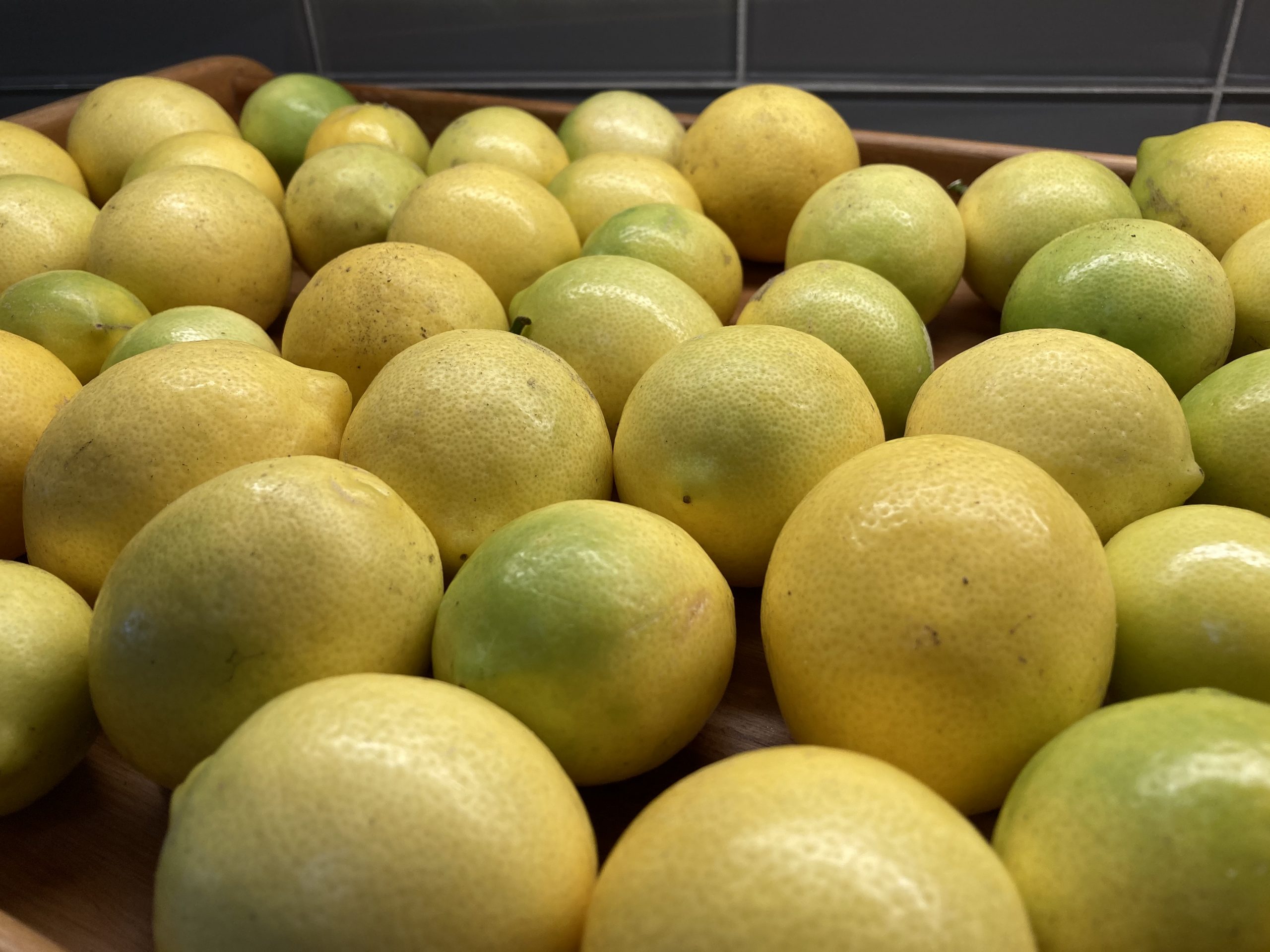
Lemons: Fresh From the tree in Canada!
Lemons: Fresh from the tree in Canada
I decide I want to grow lemons outdoors: I want fresh lemons in tea and in homemade hummus. I want lemons on fish and baked into pies. And so I move to Vancouver Island.*
 In 2018 my trees were 3 year’s old and barely 1.5 metres tall (you can see them in their raised bed under their overhead cover, behind me in this photo.) This year the plants are 2 metres tall and touching the roof of their shelter!
In 2018 my trees were 3 year’s old and barely 1.5 metres tall (you can see them in their raised bed under their overhead cover, behind me in this photo.) This year the plants are 2 metres tall and touching the roof of their shelter!
Yes my super smart friend Joey has grown lemons on her indoor tree for at least 20 years in Calgary, Alberta.
But she only allows one or two fruits a year to form and this is by design. She pulls most of the blooms off so she won’t overly stress the tree. Using her special “greenhouse” window in her house, her perfect spot for growing lemons stays nice and bright but cool in winter because it is open to her cool basement below.
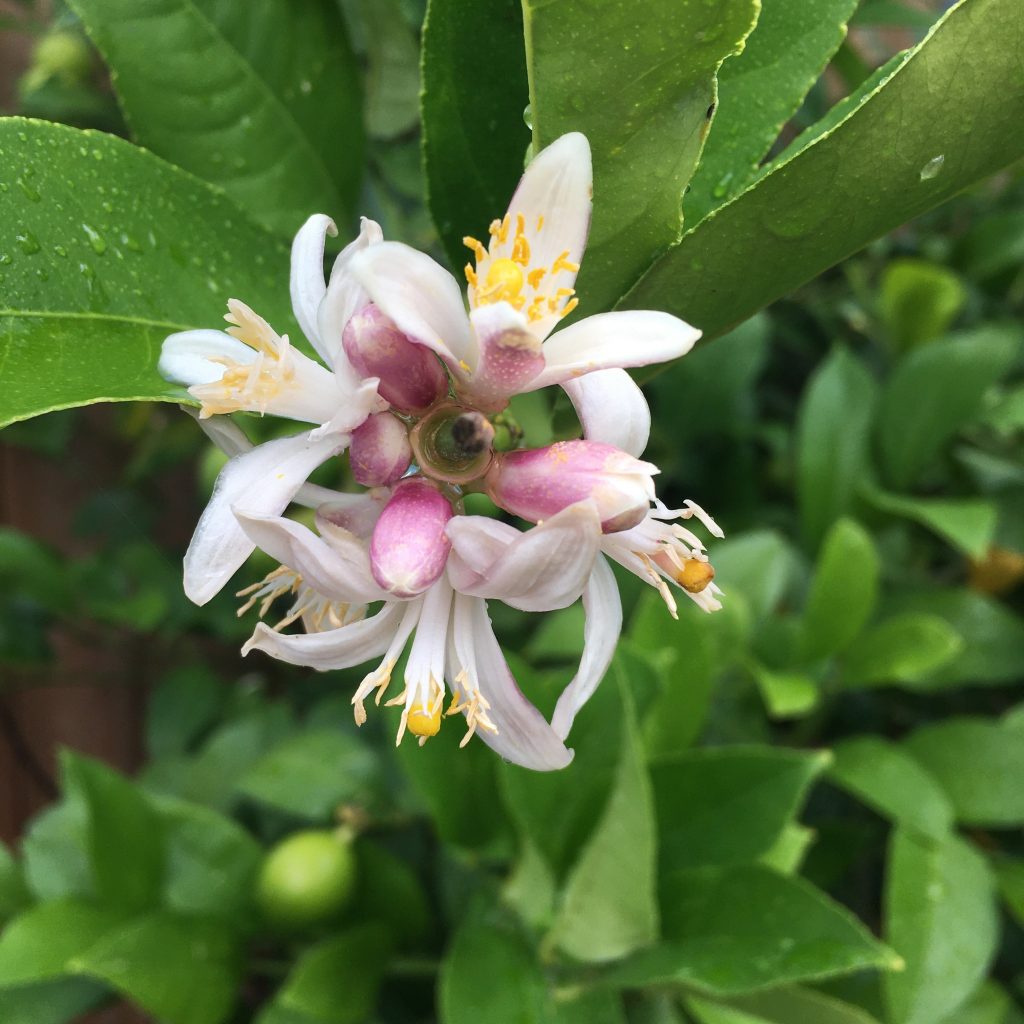
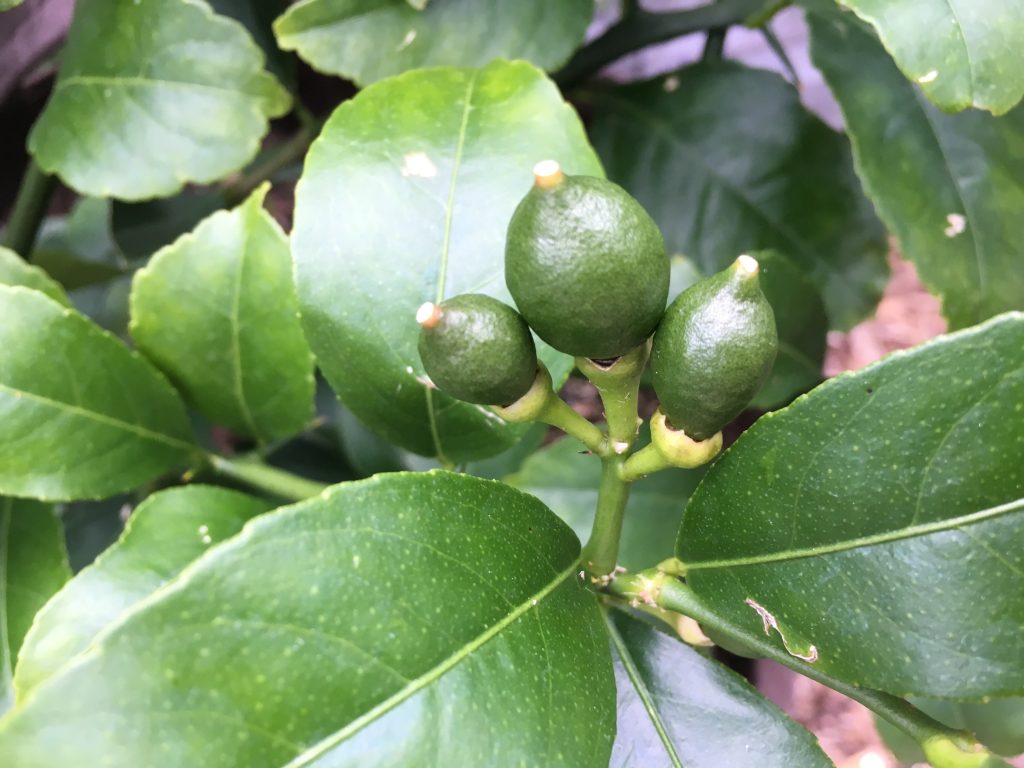 The whole lemon plant is scented but the tiny Lemon flowers smell the best. They do not need pollinators but remember, not every flower produces a viable lemon: some fruits simply drop off. See the small cluster of fruit here after full bloom (above.) Once lemons are full size they turn yellow. They can be on the tree for up to a year before you pick them.
The whole lemon plant is scented but the tiny Lemon flowers smell the best. They do not need pollinators but remember, not every flower produces a viable lemon: some fruits simply drop off. See the small cluster of fruit here after full bloom (above.) Once lemons are full size they turn yellow. They can be on the tree for up to a year before you pick them.
“It just gives you such a good feeling to grow your own citrus. So fresh, so exotic, so much fun.”
I want loads of lemons so I move to Canada’s west coast where the coolest temperatures are usually in February and are mostly above minus 10 C. Once on the coast, I start growing and harvesting lemons like a fiend – especially after I visit Bob Duncan of Fruit Trees and More in Saanich.
Bob seems to have cracked the code on lemons and is always happy to share info (See his video HERE). When I visit the first time, Bob tells me lemon plants can survive down to minus 7 C, but, he tells me, the fruit freezes unless the temperatures are kept around zero. So, like Bob, I install Christmas lights and Agribon row cover every fall and set my thermostat to plus 2 so the lights come on when it gets close to freezing.
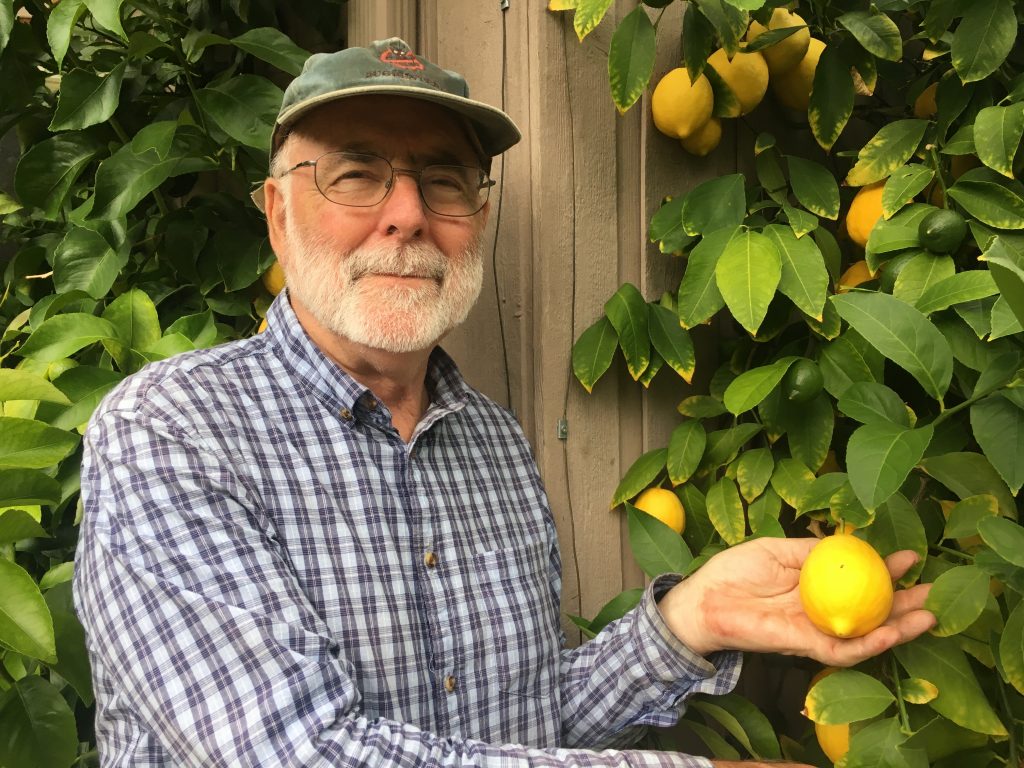 Bob Duncan picks over 200 Meyer lemons on each of his outdoor trees near Victoria, BC. He planted his first lemons about 20 years ago.
Bob Duncan picks over 200 Meyer lemons on each of his outdoor trees near Victoria, BC. He planted his first lemons about 20 years ago.
COVID has enticed many people to visit Vancouver Island for the winter. Visitors are expecting limited snow (we get one or two snowfalls a year), no winter storms (unless you count waves so high on the ocean they splash over buildings) and plenty of long walks on the beach (so much fun in any weather!)
So on mild days when visitors see my outdoor lemon trees the first thing they add to their must-do list is “move to the island.” The second thing is “plant a lemon tree.” It just gives you such a good feeling to grow your own citrus. So fresh, so exotic, so much fun.
 The Meyer lemon is crossed with a mandarin so it is smaller and finer textured than other lemons. It is thin-skinned and super juicy. I keep a few lemons in my greenhouse as well as outdoors in my special Bob-inspired, Keith-built shelter.
The Meyer lemon is crossed with a mandarin so it is smaller and finer textured than other lemons. It is thin-skinned and super juicy. I keep a few lemons in my greenhouse as well as outdoors in my special Bob-inspired, Keith-built shelter.
Looking back on my “covering lemons for winter” video from 2015 I see how much longer my hair is and how much shorter my trees are. The tiny lemon trees were only two years old when I first covered them. They are now touching the roof of my shelter and this year I harvested 54 lemons in the fall and probably a total of 75 lemons per tree during the summer (Check out my long-haired 2015 video about covering lemons outdoors HERE.)
 Keith’s drawing for my lemon shelter is different from Bob’s design. For one thing we don’t have a south facing portion of our house like Bob. So Keith built a fence panel at the back, had some metal tubing bent to form a roof, placed polycarbonate on the “roof” and designed a raised bed so the lemons have good drainage. Like Bob, I use Christmas lights, Agribon (similar to reemay) and a thermostat to turn the lights on when the temperature dips to plus 2 C.This keeps the lemons I leave on the tree from freezing solid.
Keith’s drawing for my lemon shelter is different from Bob’s design. For one thing we don’t have a south facing portion of our house like Bob. So Keith built a fence panel at the back, had some metal tubing bent to form a roof, placed polycarbonate on the “roof” and designed a raised bed so the lemons have good drainage. Like Bob, I use Christmas lights, Agribon (similar to reemay) and a thermostat to turn the lights on when the temperature dips to plus 2 C.This keeps the lemons I leave on the tree from freezing solid.
 Bob’s structure for growing outdoor lemons is simply a glass roof facing south attached to his house with poles for support. In winter he uses Christmas lights and Reemay to protect the plants. He also uses a thermostat to turn on the lights and keep the fabric-protected plants warm.
Bob’s structure for growing outdoor lemons is simply a glass roof facing south attached to his house with poles for support. In winter he uses Christmas lights and Reemay to protect the plants. He also uses a thermostat to turn on the lights and keep the fabric-protected plants warm.
In my experience, moving to the island and planting lemons has been exciting. I now live here full time and take cuttings of all kinds of citrus every fall when trimming the plants. But first things first:
How do you get a lemon tree?
Bob sells Meyer Lemons and other citrus from his farm in the spring but citrus are also available at Costco, Home Depo and smaller nurseries in May for between $29.99 and $39.99.
In fall 2019 I started 100 lemons from cuttings because so few were available commercially and because I couldn’t see any reason why we would have to graft this already naturally dwarf tree. Eighty-five trees rooted from the initial 100 cuttings and I sold most of them to local gardeners. This fall I took another 140 cuttings of lemons.
“Eating a lemon you actually produced from a flower is the most exciting thing in the world. It is so deeply satisfying,” says Joey from Calgary.
If you have a friend with a Meyer lemon tree take a six-inch cutting, remove all but the top leaf and dip the stem into rooting hormone. Then place clumps of ten cuttings into each 4″ pot filled with peat-light soil mix, water well and pop each pot into a plastic bag to keep the humidity high. I put my cuttings on a heat mat until they root in about three weeks.
 As the lemons get bigger they take on a hint of yellow. They are edible at this stage but can also be left on the tree for up to a year after they turn yellow.
As the lemons get bigger they take on a hint of yellow. They are edible at this stage but can also be left on the tree for up to a year after they turn yellow.
Are Lemons Any Trouble?
Yes, lemons and all citrus get scale (an insect problem) and I have not been able to find a bug that eats scale on my trees (although I think the wasps play a role because outdoors there are fewer scales than in my greenhouse and I see a lot of wasps around my outdoor trees in summer.)
I find dipping a q-tip into rubbing alcohol and then dabbing it on the brown scale removes it. There is also a season when the scales open up and tiny immature insects emerge and march up the plant. Scales are sap sucking insects so they drop honey-dew like aphids. This makes the leaves sticky so wash sticky leaves with a damp cloth to remove the mess. Scale doesn’t hurt the lemons but it is messy so I clean them occasionally when they are small. Try the q-tip trick before the babies hatch.
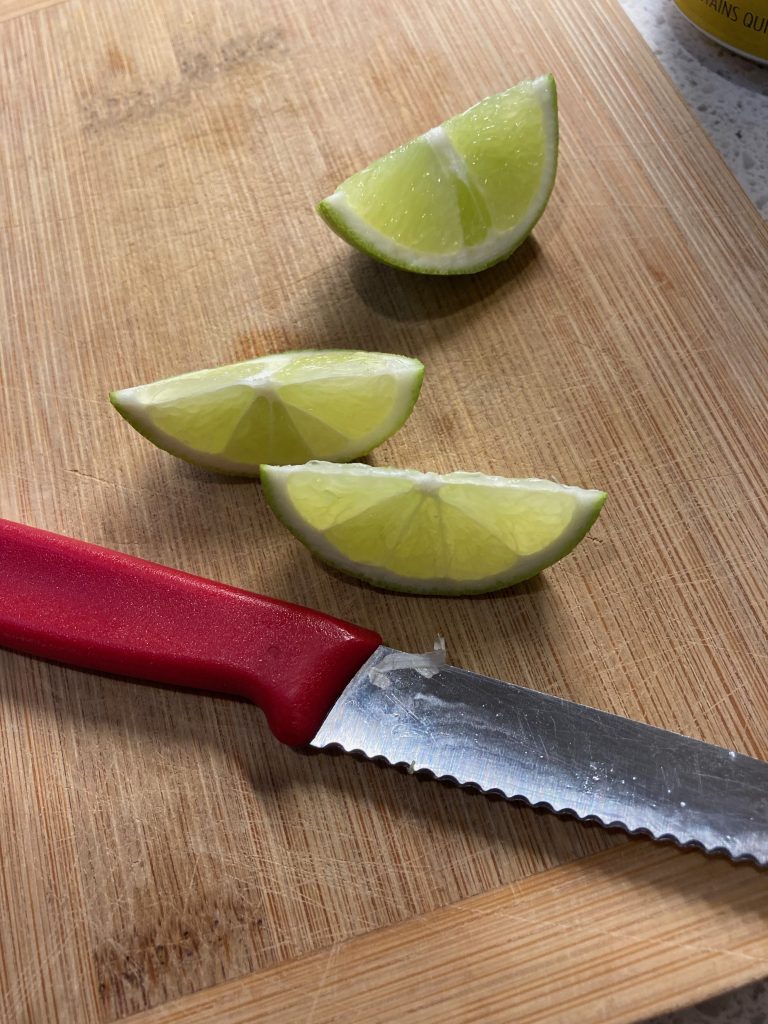 Fresh Limes in drinks are amazing… just saying.
Fresh Limes in drinks are amazing… just saying.
What Other Citrus Can You Grow?
After visiting Jane Squire on Salt Spring Island in February 2020 and seeing all her oranges and grapefruits and most importantly her finger limes, I boosted my citrus inventory to include: Cocktail grapefruit, Washington Navel, Kishu mandarin, Kaffir Lime and finger lime. I already have a Bears Lime planted beside my Meyer lemons in 2015 under the same outdoor shelter. All my fancy new citrus are in my big greenhouse so time will tell how they produce.
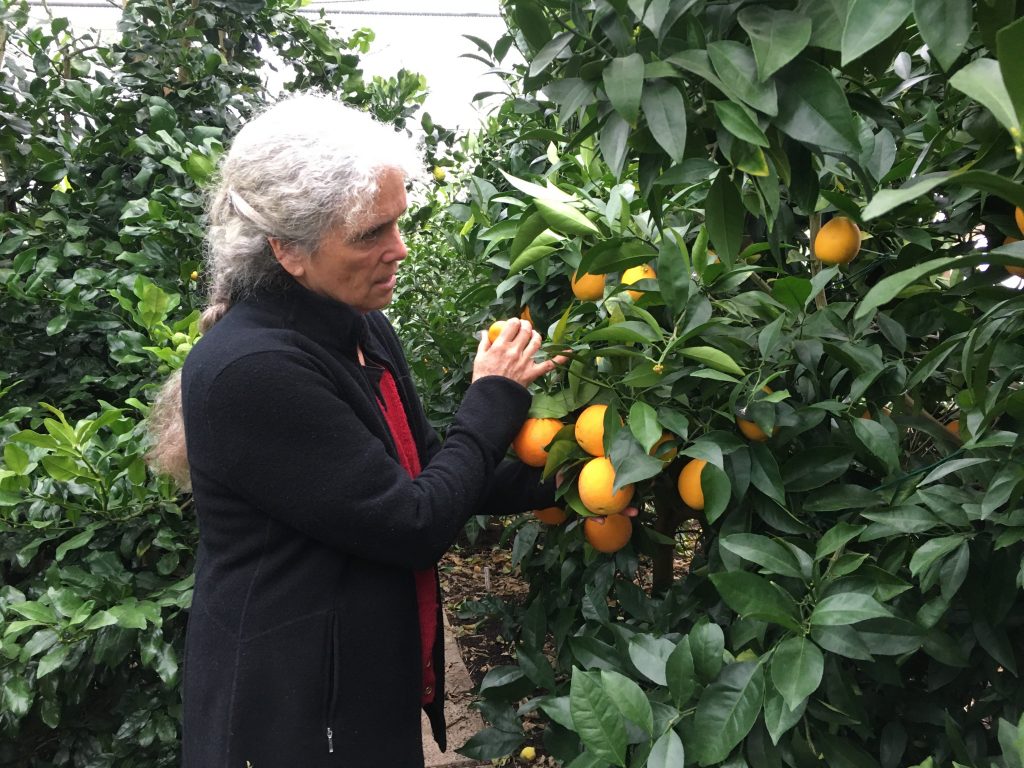 Jane Squire used to grow living lettuce in Calgary, Alberta until she sold out and moved to Salt Spring Island. Her retirement project on Salt Spring is a large citrus greenhouse including oranges and grapefruits. She was featured on one of my early podcasts so have a listen. She is fascinating.
Jane Squire used to grow living lettuce in Calgary, Alberta until she sold out and moved to Salt Spring Island. Her retirement project on Salt Spring is a large citrus greenhouse including oranges and grapefruits. She was featured on one of my early podcasts so have a listen. She is fascinating.
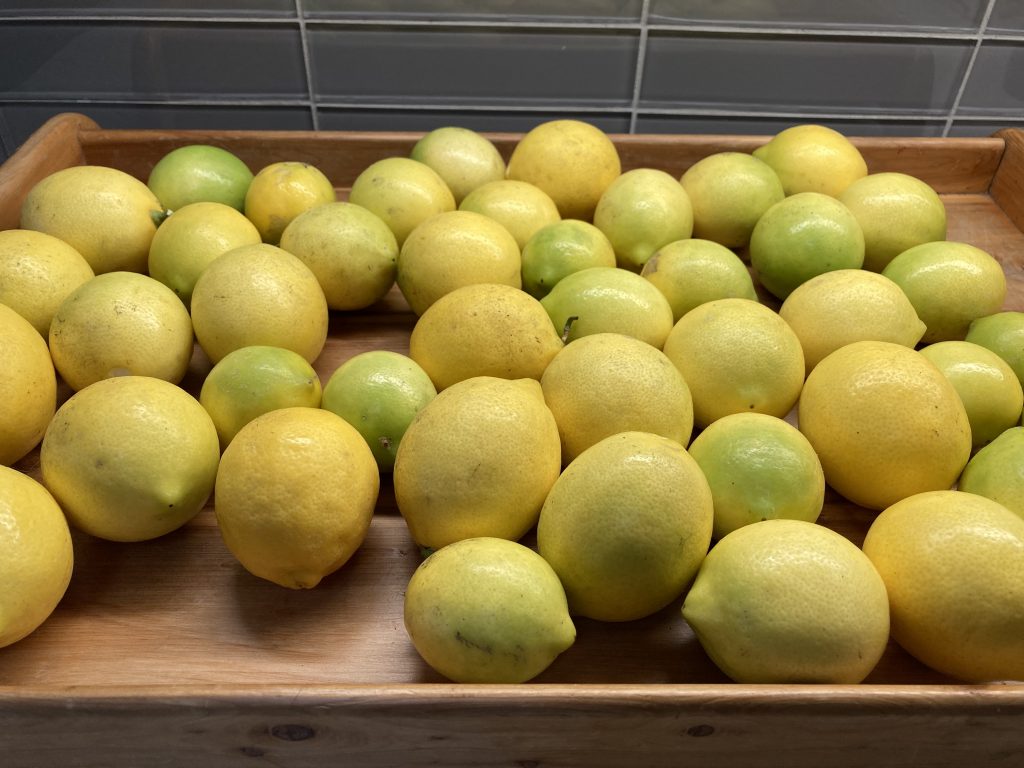 The lemon crop this fall was picked all at once because after we cover the lemons for winter it is easier just to leave them covered until spring. By then many more lemons will have ripened and so the eating starts again!
The lemon crop this fall was picked all at once because after we cover the lemons for winter it is easier just to leave them covered until spring. By then many more lemons will have ripened and so the eating starts again!
Lemons, Limes, Oranges and my newest passion Kaffir Lime are all citrus that can be grown in Canada especially if they are given some shelter in a garage, a greenhouse or possibly even outdoors on the west coast. Gardener’s in cold climates like Joey in Calgary benefit most from a bright cool spot indoors.
“Eating a lemon you actually produced from a flower is the most exciting thing in the world. It is so deeply satisfying,” said Joey over the phone today. Her tree, now almost 10′ tall only produces two lemons a year because she is afraid to stress her tree so she picks off most of the flowers right after they bloom and only allows a few to form into lemons. I encourage her to let the tree decide how many fruit it can support and she agrees to leave the flowers alone in 2021 to see if she can get even more lemons.
Most citrus can be grown in a home but the cooler and brighter the better. If you want to try growing citrus go for it. The flavour is amazing and the feeling of growing your own fruit is fantastic. So grow and enjoy!
 All buttoned up for winter my lemons, growing outdoors in Qualicum Beach in their special Agribon cover, are ready for whatever the weather will bring to the coast. Meanwhile I have many little cuttings in my greenhouse ready to root and move outside next spring.
All buttoned up for winter my lemons, growing outdoors in Qualicum Beach in their special Agribon cover, are ready for whatever the weather will bring to the coast. Meanwhile I have many little cuttings in my greenhouse ready to root and move outside next spring.
*PS In case you think we moved west just because of lemons I admit I exagerate. We moved to Vancouver Island after my mother talked my husband into buying a house from a friend of hers. The lemons came later. For the record, it has been a good move and even though my mom is no longer with us, I find myself trying to think of ways to get my own kids to move to the coast. And, of course, we try to bribe them with lemons.
PS For extra info about growing lemons and all kinds of other citrus in a greenhouse setting in Canada listen to my podcast with Jane Squire right HERE.
Recap of rooting citrus since I have had questions:
What Would Donna Do?
Get my growing and gardening tips and pointers throughout the season.
















0 Comments